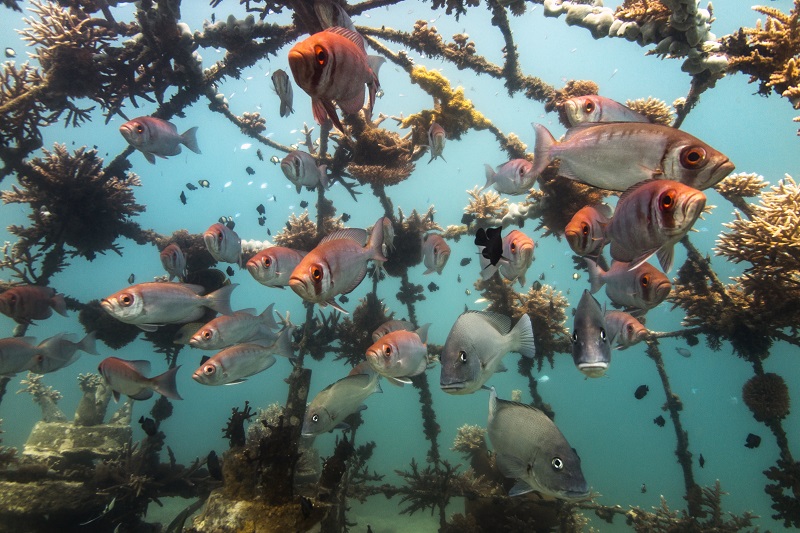Sietske van der Wal Inter Marine Park Manager and Conservation Education manager of the Aruba National Park Foundation FPNA is in charge of the research portion of Aruba’s coral reefs in the Turning the Tide project. This project is subsidized by European funds together with the universities of the Netherlands and Aruba, FPNA and ScubbleBubble.
Inter Marine Park Manager and Conservation Education manager of the Aruba National Park Foundation FPNA explains that the current focus is on restoring coral reefs, which will include putting several artificial reefs in our lakes to bring back some of the underwater structure.
Currently, Aruba’s seas are highly degraded and due to this lack of underwater structure, but it also does not attract the fish and the consequence of this is that there will be less fish and because there are fewer fish that need to keep Aruba’s reefs clean of algae the underwater situation becomes a concern and due to this situation there are fewer opportunities for new corals to grow.
According to Sietske van de Wak, one solution is to create the underwater coral structure. This Turning the Tide project will include putting several artificial structures under the sea. Two types of models will be tested to see if these two tests are effective and many surveys will be conducted before, during and after the corals are placed. For example, artificial reefs use building materials to create underwater structures that look like coral. It is a special process and not cement like we use on earth.
In this way the effect of these underwater structures can be measured. Once it is proven that the selected models work in Aruba, it will continue to do so. There are models that are hero structures that are connected to each other that have already been tested to work in different areas where they started in Indonesia, but also the other structure that is a concrete structure with holes in it also where there are shapes and homes that the fish have to test in Kenya that has worked, but it has worked in other types of sea temperatures but not in the Caribbean, however Aruba will test these if in the Caribbean these two models work. While the outcome is positive in this process itself, Aruba is learning what all these models bring with them and will also learn the tricks around the whole process and if it works it can continue to do so in the longer term for Aruba.
The entire process is a pilot project where 24 underwater coral structures will be installed, eight in each protected area on the south coast of Aruba. It should be clear that this is a pilot project and when it is put into operation we will see if it works for us here in the Caribbean. Once the outcome of this pilot project is known, it will continue to expand if it works for Aruba and if it does not work, it will be necessary to look for other alternatives for Aruba.
According to Sietske van der Wal Inter Marine Park Manager and Conservation Education manager of the Aruba National Park Foundation FPNA on the structures that will be placed in the sea will put two types of coral on them which are elkhorn corals and stekhelles corals which are the two most affected corals around the world. The Turning the Tide project began by looking at several studies that had been done before that Aruba’s seas and coral reefs are degraded and in a suboptimal state, meaning they can no longer sustain themselves in a sustainable manner.



1 comment
[…] Source link […]